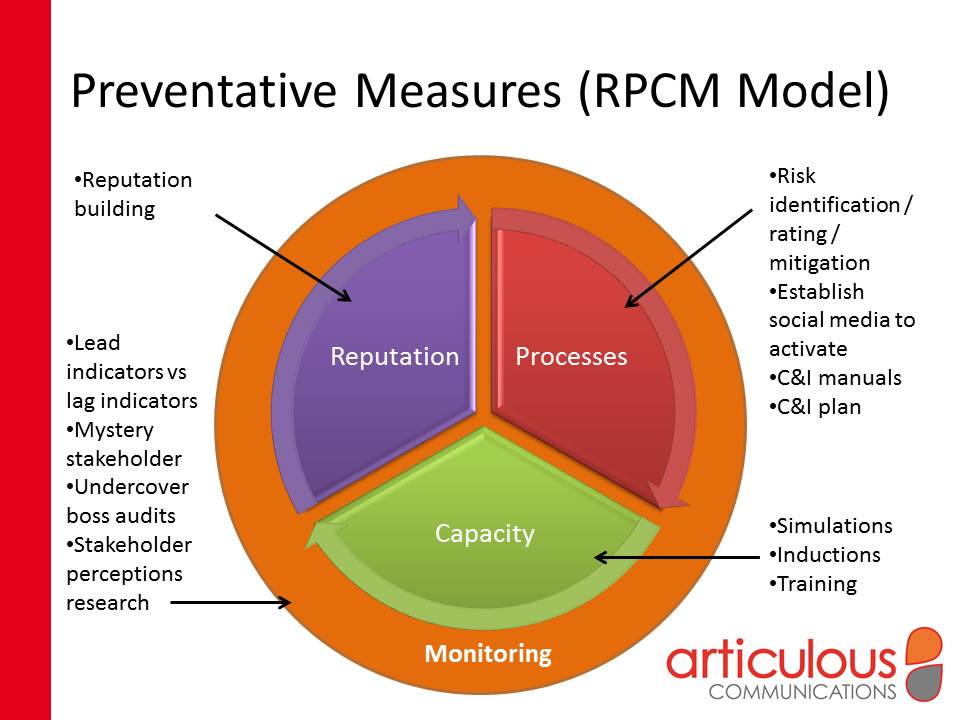It’s 4.45pm. The phone rings. It’s the daily metro newspaper. They know. They’ve got comments from everyone. Except you.
You check. It’s already on Facebook. It’s bad. Very bad. Worse still. You didn’t know anything about it.
It’s a communication professional’s worst nightmare.
Reputation management doesn’t happen in a moment.
It’s a three-stage process:
1. Building and maintaining reputations
2. Protecting reputations
3. Rebuilding reputations
Some are lucky and spend most of their time building and maintaining reputations. Others get stuck, toggling between protecting and rebuilding. And others never get out of crisis control, constantly defending their organisation and never getting the chance to be proactive.
While much can be said about what to do in a crisis, that’s a case-by-case basis.
Where it’s better to focus is on Stage 1.
RPCM Model of reputation management
Articulous has developed the RPCM Model for reputation management. It focuses on:
- Reputation: Activities to carve out and then build a reputation
- Processes: Processes needed to integrate crisis and issues management into your organisation. There is a heavy focus on identifying issues early and preventing them from escalating
- Capacity Building: Training and coaching staff into how to prevent, identify and act when issues are confronted. This might include inductions, training programs or simulations.
- Monitoring: Evaluating your reputation with stakeholders. This might include stakeholder research or even an “Undercover Stakeholder Audit”, which is a new Articulous product.

Stage 2 focuses on what to do when you need to protect your reputation. There are four types of reputation attacks – sudden, smouldering, sustained and structural. Over the past year we have seen many organisations tarnish long-held reputations based on how they have managed downsizing during tough economic times. Structural changes are the easiest to manage, but so often the worst handled.
Stage 3 focuses on Rebuilding Reputations. In the aftermath of a crisis, some panic, some put their heads in the sand, some make it worse. The key actions to consider are:
- Assess the REAL impact of the crisis. Was it as bad as you think? What do stakeholders think? This is the time to get independent insight.
- Acknowledge past problems and impacts to staff and to stakeholders.
- Act.
Managing Reputations is difficult. No doubts about it. But if you are stuck in Stage 2 and continuously protecting your reputation, now is the time to stop and think about how to get out of the rut and get the upper hand.
Articulous Communication specialises in tough projects. Our staff have managed crises including angry protesters, media frenzies, outraged communities, negative social media campaigns, deaths, injuries, legal cases and more.
This is an extract from a Presentation to the Society of Business Communicators Queensland.





